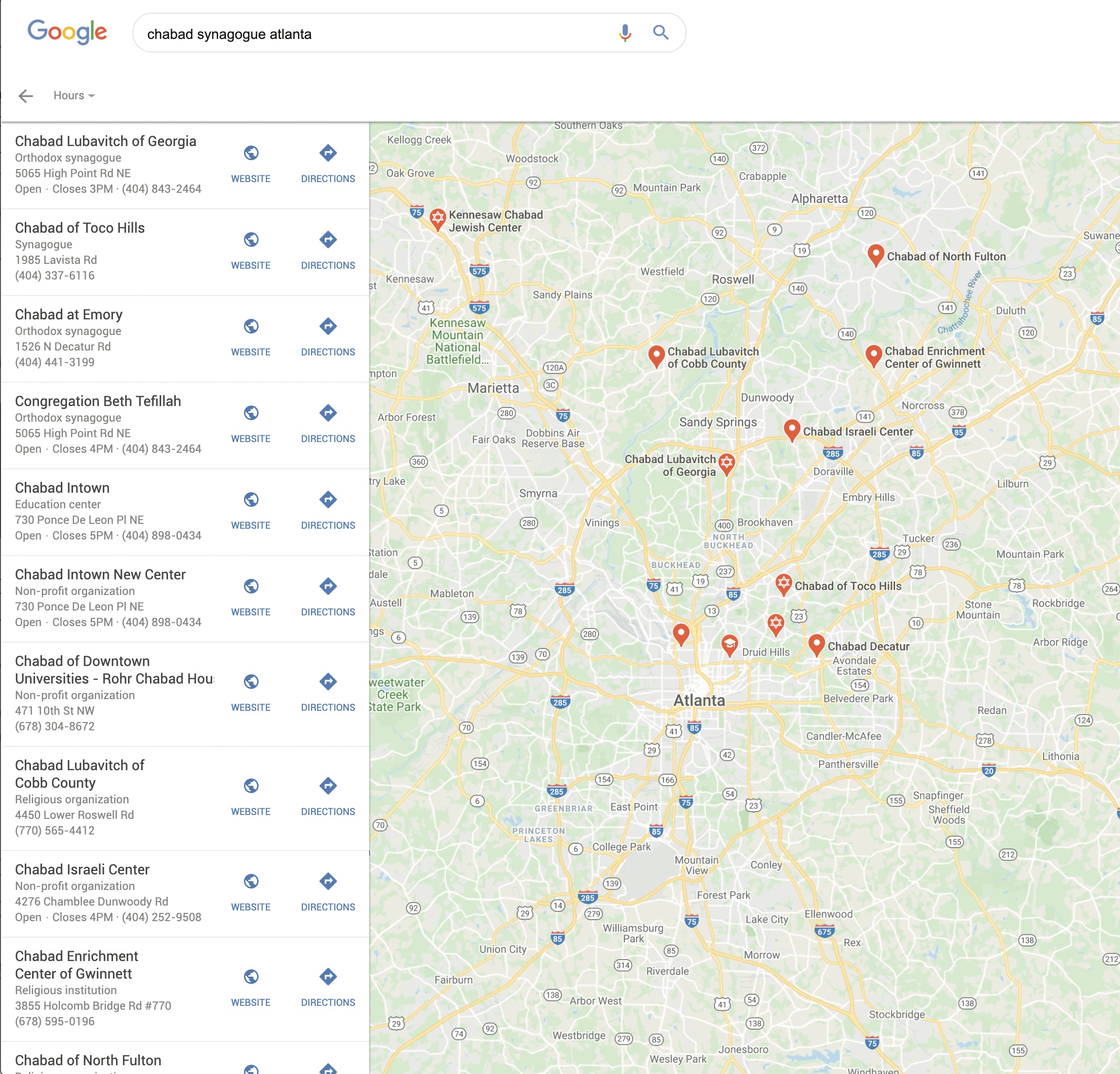The 5780 Purim Gazette
The AJT again welcomes professor Essie Fresser to our pages. Our readership looks forward to her annual summary of Atlanta’s most significant stories. The AJT is eager to oblige.
What’s in the Name?
Ben Tobox, owner of Crockpot, a popular soup and stew kosher restaurant chain in Ypsilanti, Mich., decided to try his luck in the South. He was in a hurry to equip his kitchen, purchase furniture and order signage for his new venture in downtown Atlanta in time for the busy winter holidays.
Desiring to employ local workers, he hired two young men who offered to barter in exchange for creating a large neon sign for the building façade. Tobox happily agreed and concentrated on indoor matters.
Tobox couldn’t figure out why there was a nonstop stream of eager customers who rushed in and carefully scrutinized the entire premises, appeared disappointed, then usually left without ordering anything or even looking at the menu.
It took a few days before he checked the front of his restaurant.
In retrospect, Tobox says that the youths, although claiming to be competent spellers, were no doubt improperly influenced by their personal lifestyles and the pervading contemporary culture.
The name on the restaurant sign explained everything:

A quick learner with entrepreneurial spunk, Tobox immediately added brownies and hash to his bill of fare.
Google Maps/Chabad On-going Study
Google Maps, in its 2018 usage review, discovered that “Directions to Chabad synagogues in Atlanta” is its largest request category, surpassing previous leaders: Directions to McDonald’s and directions to Walmart. The imminent addition of new Chabad centers in the metropolitan Atlanta area, including Atlantic Station and Ponce City Market, underscored the popularity of the Orthodox outreach organization, prompting Google to probe deeper into the unexpected finding. Obviously, something unique propelled a religious organization to such popularity, and knowledge of the secret was definitely marketable.
To this end, a volunteer task force of Jewish men and women who had no previous Chabad experiences, was formed to infiltrate the organization. At the end of the year, at the 2019 annual Google Maps usage review, Chabad again held the number one spot, and two more Chabad enterprises were on the drawing boards: a matzah factory at Stone Mountain and a shomer Shabbat makerspace at the DeKalb airport.

The study of Chabad popularity was meant as a one-year endeavor; however, when excused from their assignments, the Google task force members unanimously requested a second year of enlistment. They claimed that it would take at least another year of immersion to find homes in walking distance of Chabad synagogues, negotiate day school tuitions, and completely reequip their home kitchens.
Up against the wall, Google chose not to accept their second-year entreaty, due to the overwhelming requests of worldwide employees in their research division to relocate to Atlanta.
News from Our Jewish Homeland
Pest Control Invention

When Shira Ryde graduated from the Technion, she took a job with Vantz-Off, makers of popular non-toxic pest control products. An introvert, she was disturbed by outgoing coworkers who got too close and invaded her personal space. Could she use her expertise to create a safe, but effective deterrent for human pests? Ryde recalled the strong reactions of family members when her Uncle Izzy was in the room. His offensive halitosis inspired her to invent Garlic Breath. A single, properly aimed aerosol shpritz from this product has the intense repulsing power to stop unwanted interaction from up to 10 feet away. Although Garlic Breath is not a big success in Israel, it is expected to be hugely popular in the American market where people don’t like to be bothered.
Dr. Fresser, chair of the Narishkeit Department of Shvitzer College in Loganville, is a noted intellectual and award-winning, intrepid reporter, best known for her groundbreaking work on sentence parsing and the insidiousness of acronyms.

Ask The Rebbitzen
Dear Rebbetzin Vahsser,
I’ve heard that it’s bad taste to wear white to a wedding. I have a very nice white lace and satin dress, which finally looks good on me now that I’ve lost quite a few pounds. I want to wear it to a wedding next month, just in case I gain my weight back and it won’t fit in the future. I’ve already started gaining since my Weight Watchers meetings moved to Duluth. What should I do?
Plight in White
Dear Plight,
I researched this important question in a number of rabbinic sources. There are no set-in-stone laws about this, but the prevailing opinion follows: guests at a wedding, in which the bride is dressed all in white, are encouraged to wear a different color or fade into the background and miss the schmorg.
There is debate as to whether “no white” incudes off-white, cream, ecru and taupe, but beige is generally considered to be perfectly acceptable. Interestingly, this holds true even if members of the wedding party are clad in beige, but they probably won’t like it, and why make trouble?
Rabbi Moses Maimonides favored dark neutrals, advising against red, yellow and purple; however, later commentators have no problem with aubergine and violet. A few sages even accept maroon, although this is a minor opinion, never followed by Jews from the Balkan countries.
During the middle ages, some rabbinic authorities allowed wedding guests to wear patterned garments, but plaid and polka dots were considered especially inappropriate, and beading was deemed to be trashy. Crystal beads, however, were an exception to this rule. In Hungary, headwear was expected to match, not contrast with, clothing, yet the upper classes often broke this admonition and were not immediately excommunicated, as was the unfortunate case 100 years earlier with a woman named Henya.
She was the guest at a wedding of the daughter of Shmerl Kapinsky, a town leader, and showed up in a dark blue dress trimmed at the hem and sleeves in rabbit fur, which was considered snooty and showy, and, as she was a full-figured woman, the outfit was, shall we say, snug. This incident has been graphically documented, and I learned about the case when I was a seminary student. I saw a drawing of Henya in the classic volume of commentary, titled (in translation from the Hebrew): “What to Wear, and When to Wear It.” The detailed illustration of Henya and the vivid description of her communal punishment serve as a cautionary tale for all time.
One last thought, dear Plight. Get to Duluth ASAP.
Dear Rebbitzen Vahsser,
My daughter just brought her class hamster home and wants to keep it. There’s a feral cat that hangs around outside, but this is all new for us, and we’re perplexed about a name. Please help us.
Okay With Rodents
Dear Okay,
I get this query a lot, and I must answer it honestly. I suggest that you avoid trite names like Twinkletoes, Lovebomb, and Fuzzyrump, which are so common. Stick with the classics. In my own overextended family, we have two Joshuas (dogs), one Rivka (iguana), one Eliezer (parrot) and several Solomons (rabbits). Do keep in mind that, among Ashkenazi animals, new pets are not named after living older pets. As in so many other things, Judaism is easier for Sepharadim, who can use a really good name for multiple co-existing generations.
To my readers: For a list of appropriate pet names, buy an animal lover a gift subscription to this paper and receive my new pamphlet, “Don’t Name Your Jewish Pet “Beelzebub.”

Rebbitzen Shprintza Vahsser receives thousands of queries daily. In this annual column, she selects the questions she considers most important for the writers, their families, their neighborhoods, their nations and the Jewish people in general.




comments